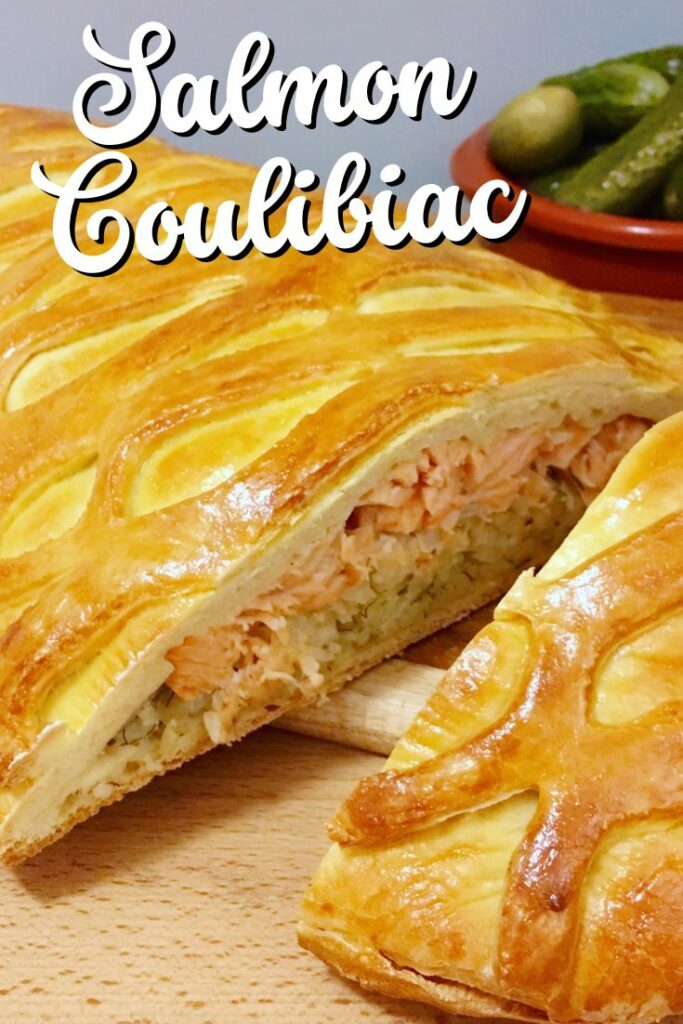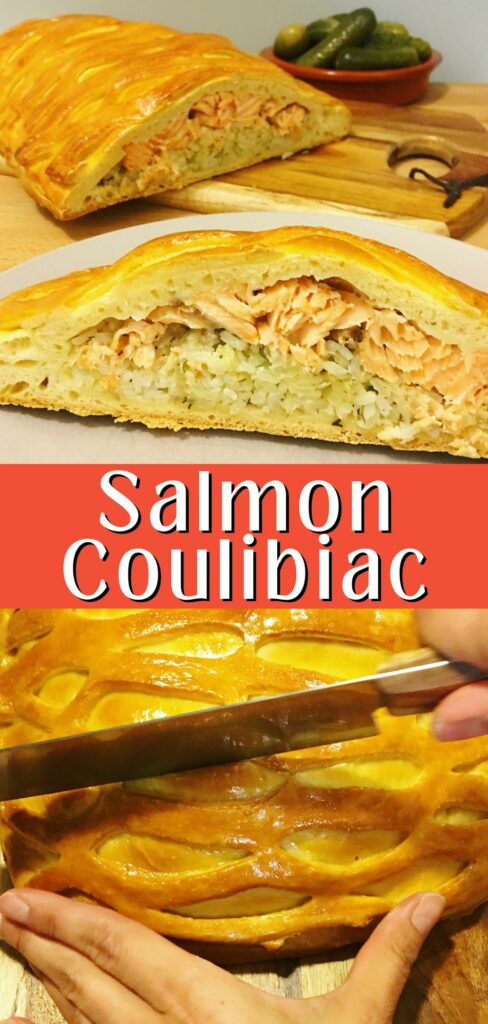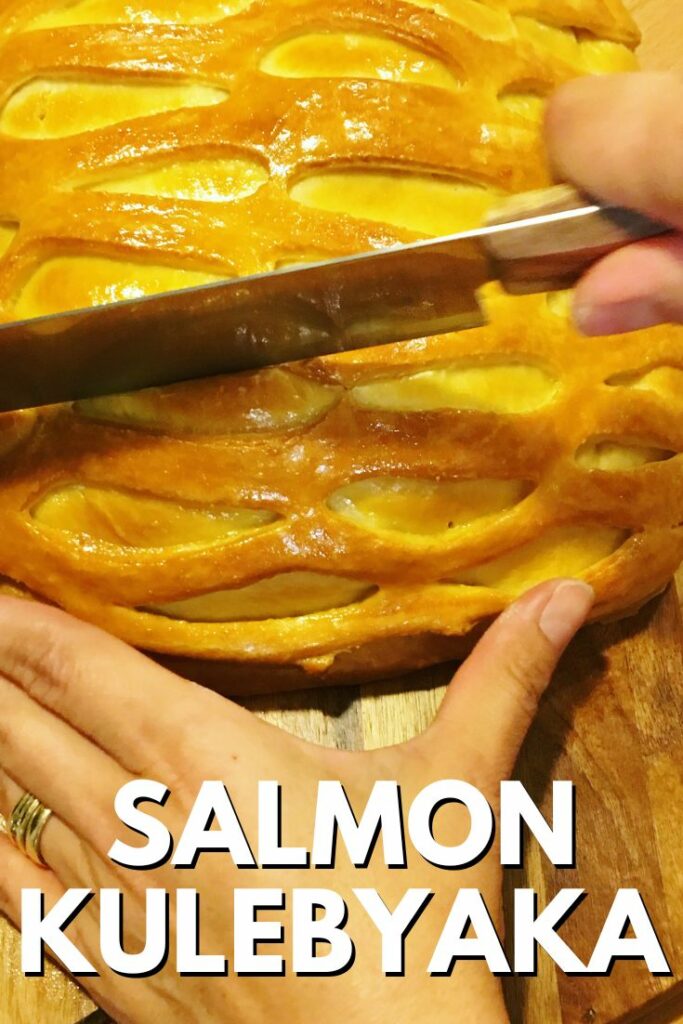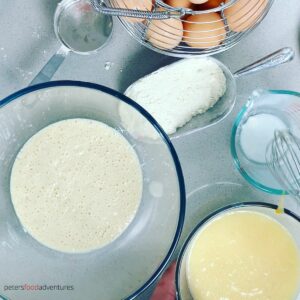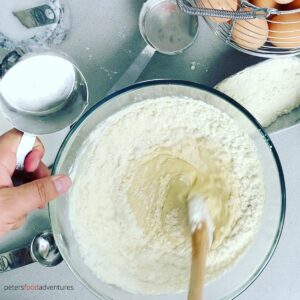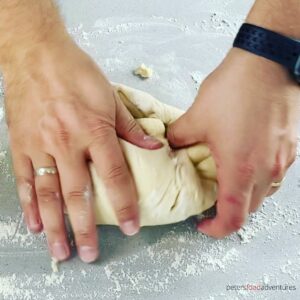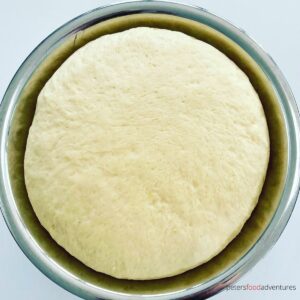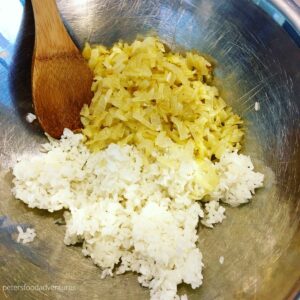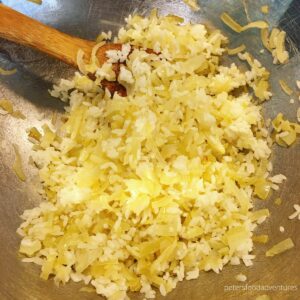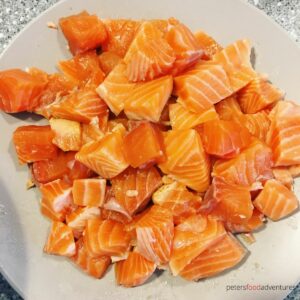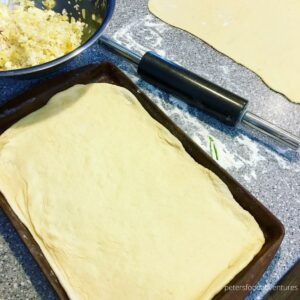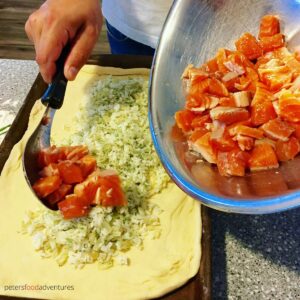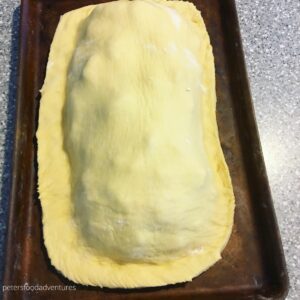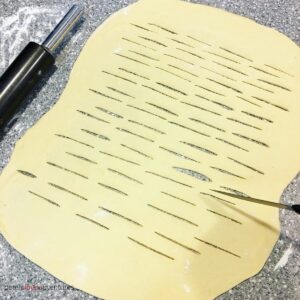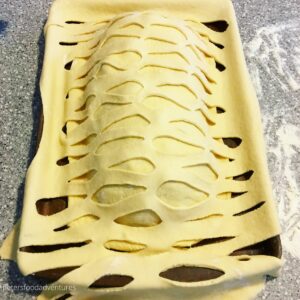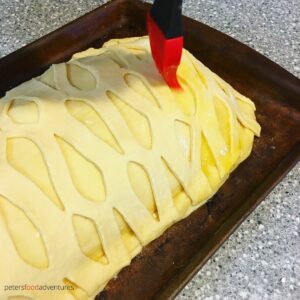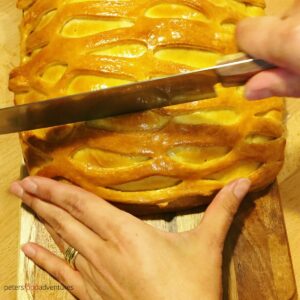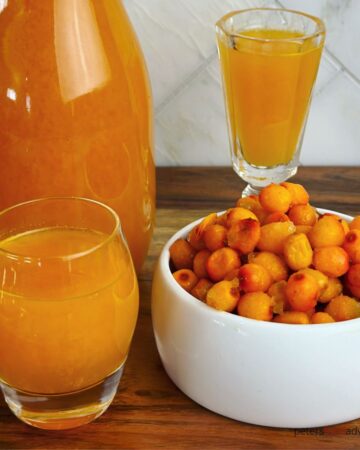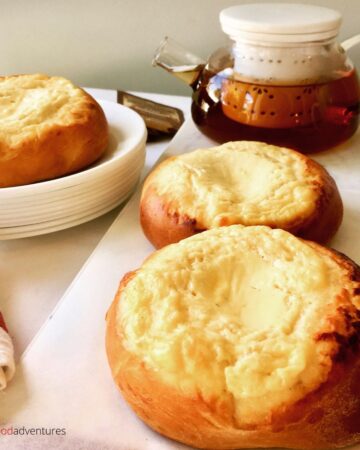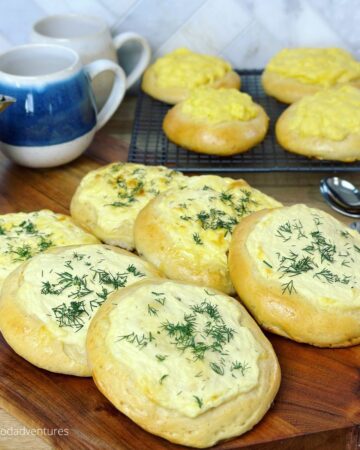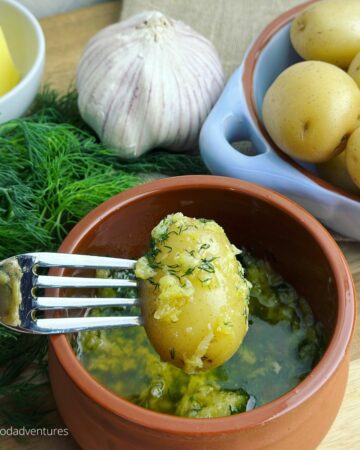Salmon Coulibiac, known as Kulebyaka in Russia, is the original Russian fish pie. This rustic pie is traditionally made with yeast dough, stuffed with layers of rice, onions, dill and salmon. With so many variations, from rustic to fancy, you can make this your very own.
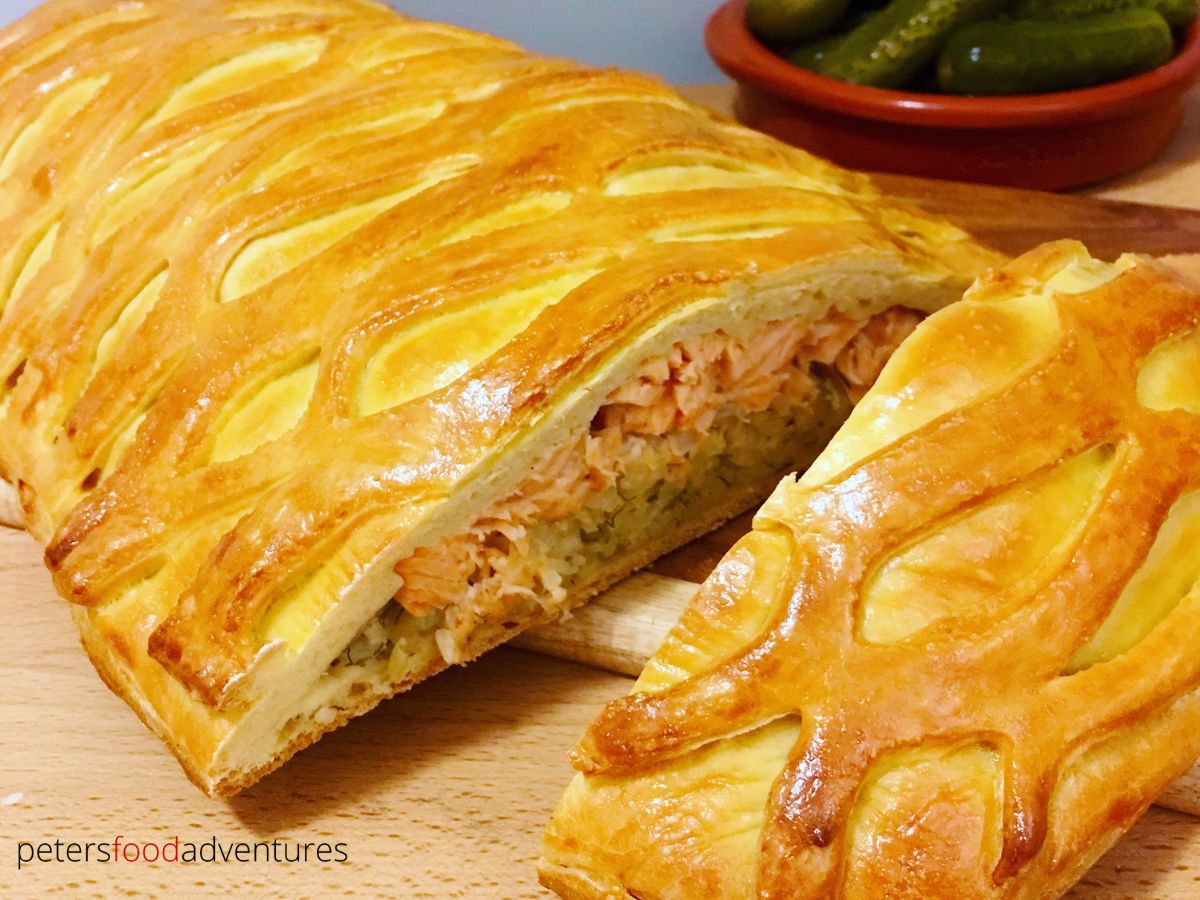
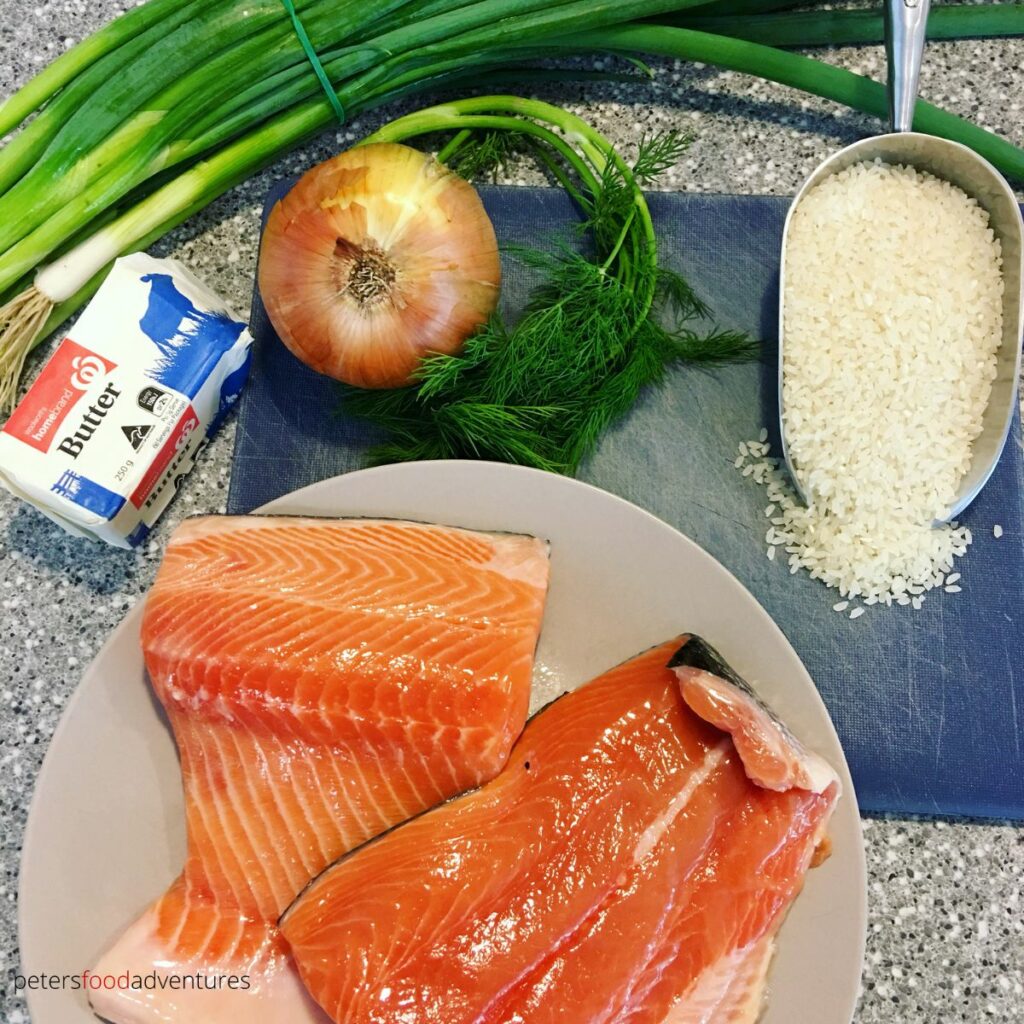
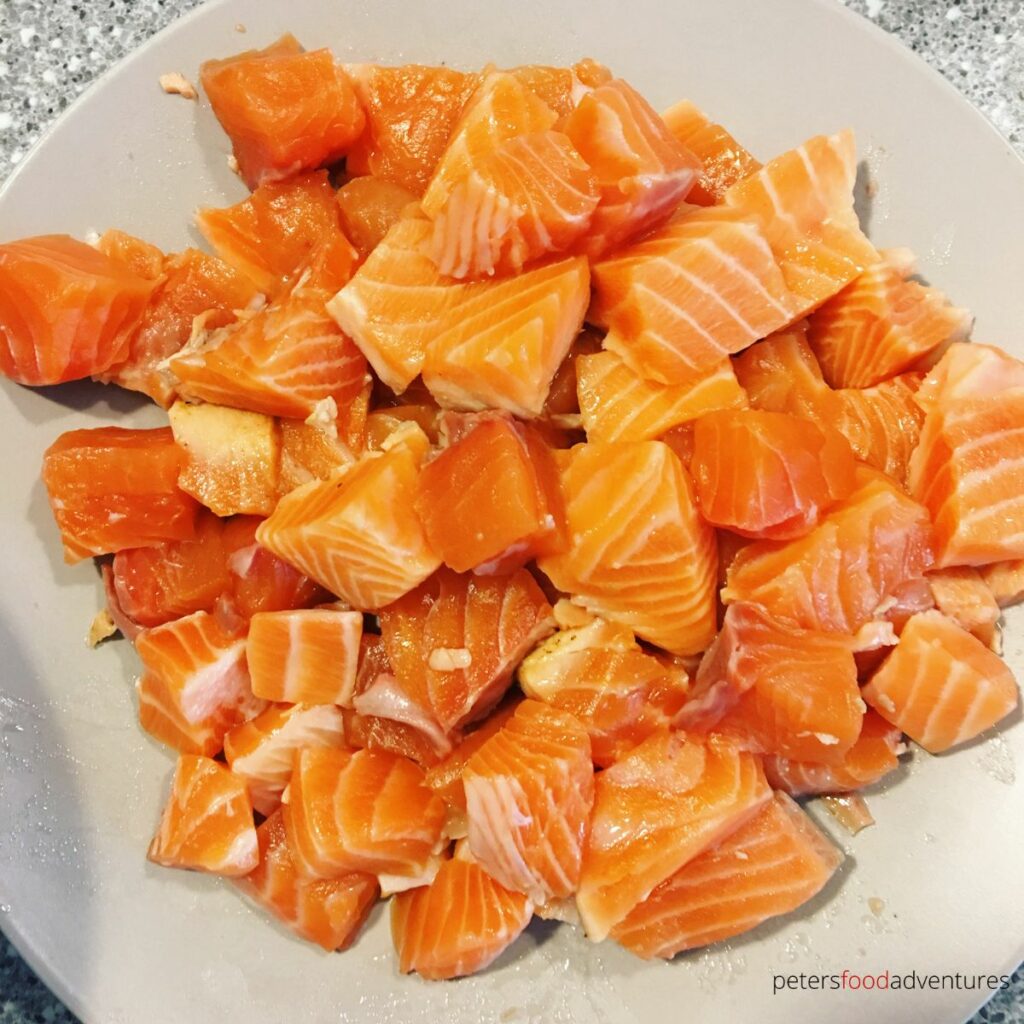
You'll love this recipe because if it's rich cultural history, the amazing flavors of salmon, rice and herbs that presents a bit fancy. Perfect for a dinner party or celebration. It was so popular in pre-revolutionary Russia that it was exported to France where it was known as Coulibiac de Saumon.
Key Ingredients
- Yeast Dough - flour, yeast, milk, eggs, salt, sugar butter
- Salmon - boneless and skinless fillet
- Aromatics - onion and fresh dill
- Rice - regular white rice
- Butter - the secret to why the filling tastes so delicious - be generous
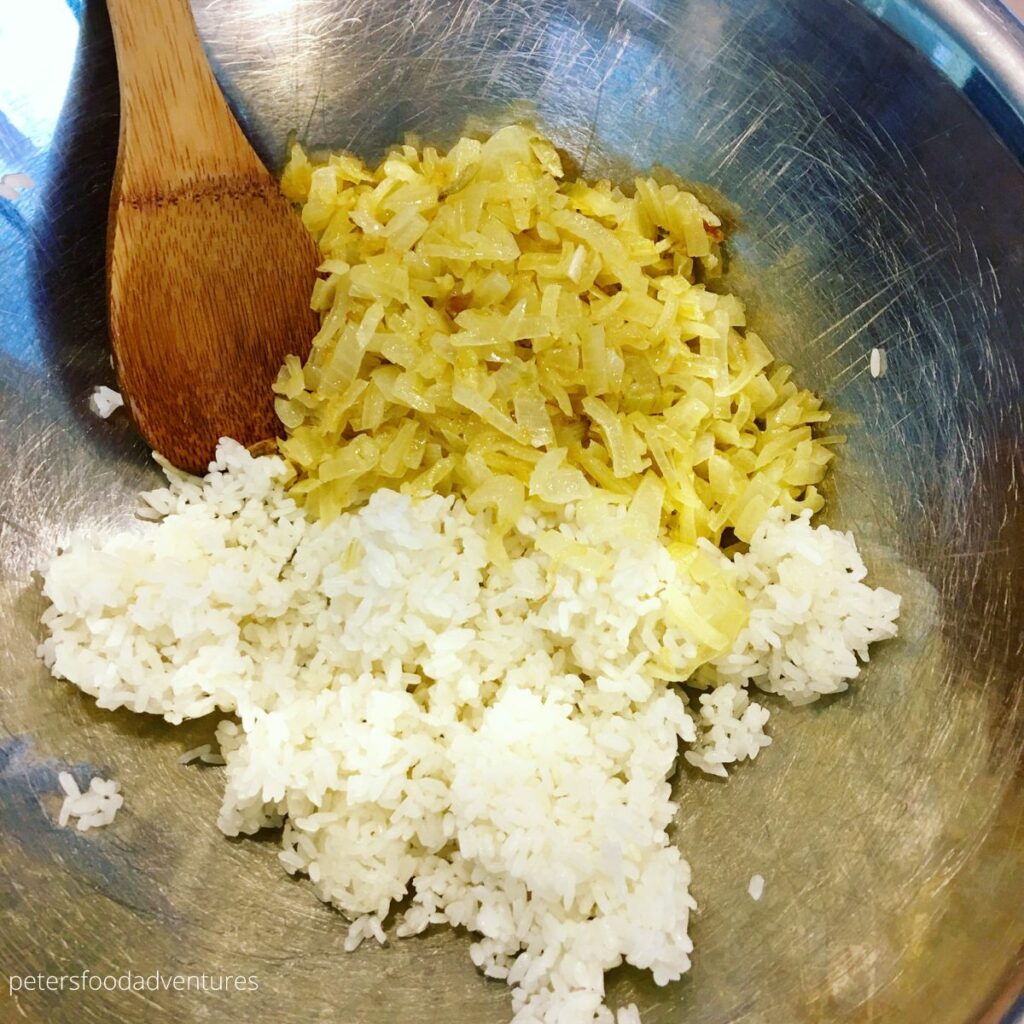
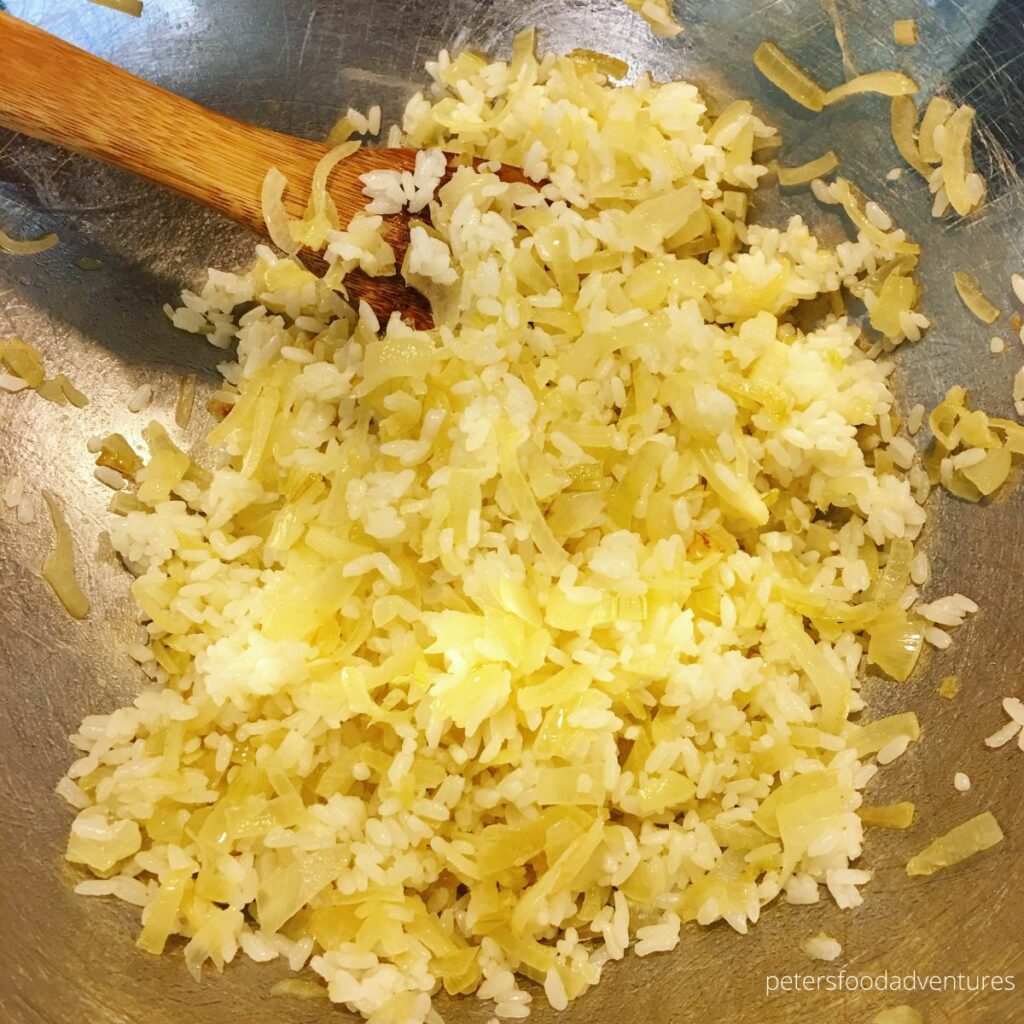
How to Make Kulebyaka
Start with the Dough
- Proof Yeast - pour yeast, sugar, salt, and ½ of the lukewarm milk in a bowl. Whisk together and mix in 2 tablespoons of flour. Allow to sit for 15 minutes until it starts to bubble and foam, seeing the yeast is activated.
- Mix - in a large bowl, add remaining flour, milk with egg and melted butter. Pour in the activated yeast mixture and stir until it forms a shaggy ball.
- Knead - on a floured surface knead for about 5 minutes until smooth and elastic
- Rise - place in oiled bowl, cover with cling wrap and a kitchen towel. Place in warm spot. Takes about 1½ hours to rise. Punch down and gently knead before using.
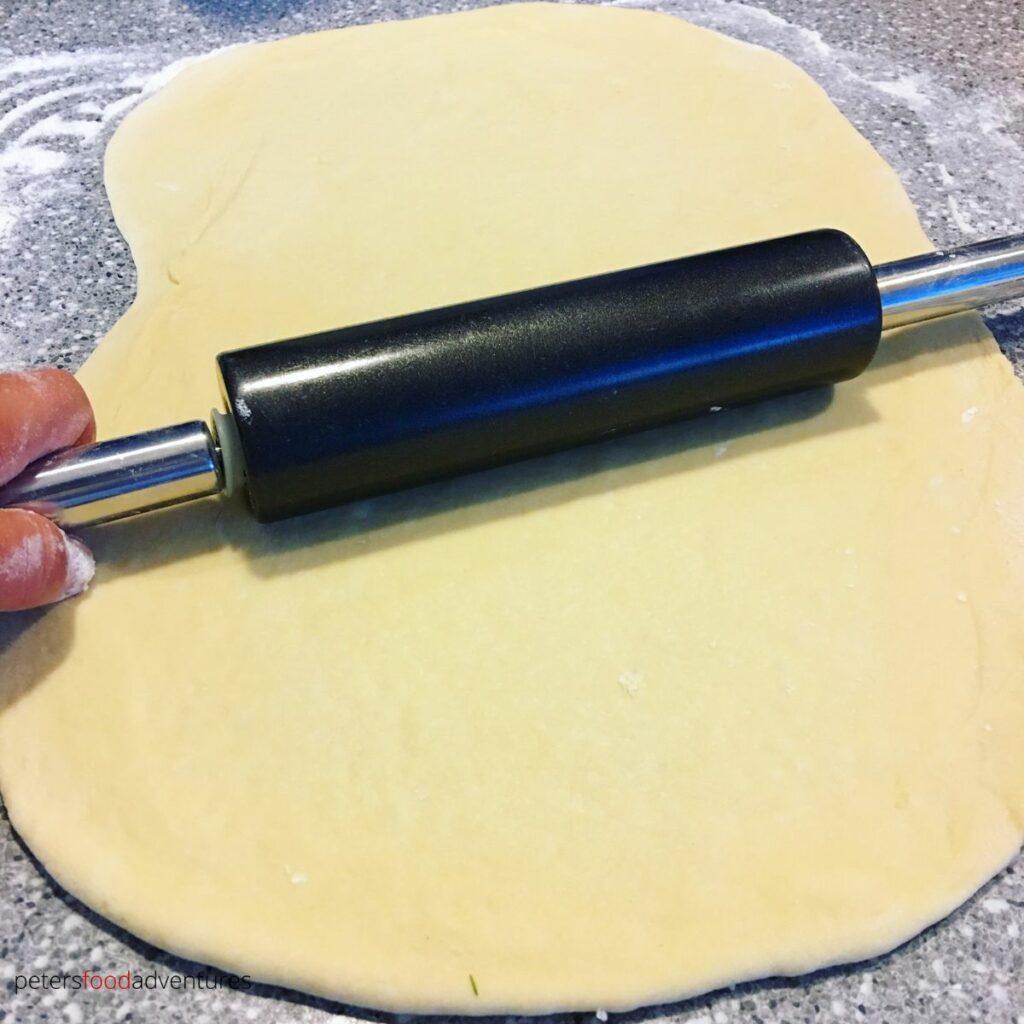
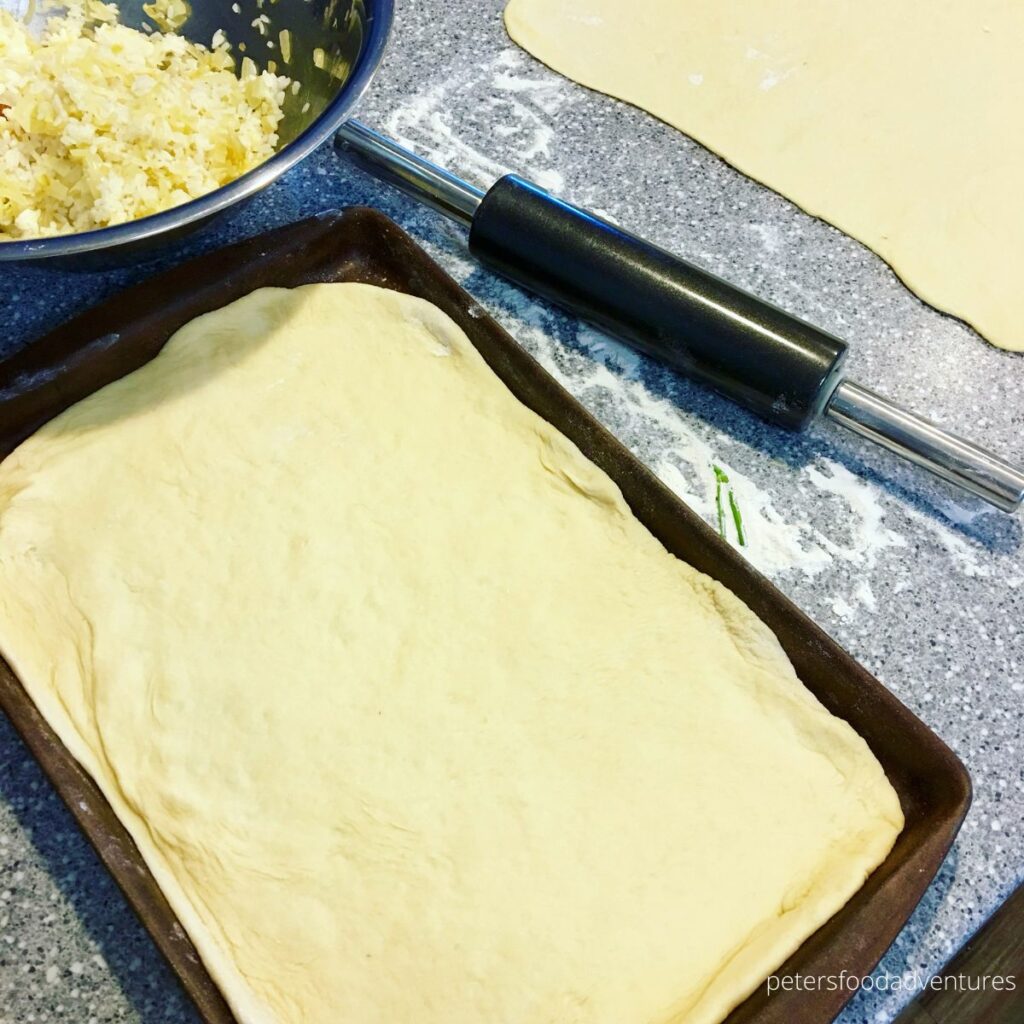
Prepare Filling
- Prepare Rice - wash and cook the rice according to directions. Fluff with a fork and set aside and allow to cool.
- Caramelize Onions - in a frying pan, heat 3 tablespoons of butter on high, and fry the onions until they are opaque and just starting to brown (4-5 minutes). Add to the rice and mix together. Add the chopped dill, salt and pepper, mix and set aside.
- Combine - add caramelized onions to rice and mix together. Mix in chopped dill, salt and pepper, set aside.
- Cut Salmon - chop the salmon into chunky bite size pieces. Season with salt and pepper, set aside.
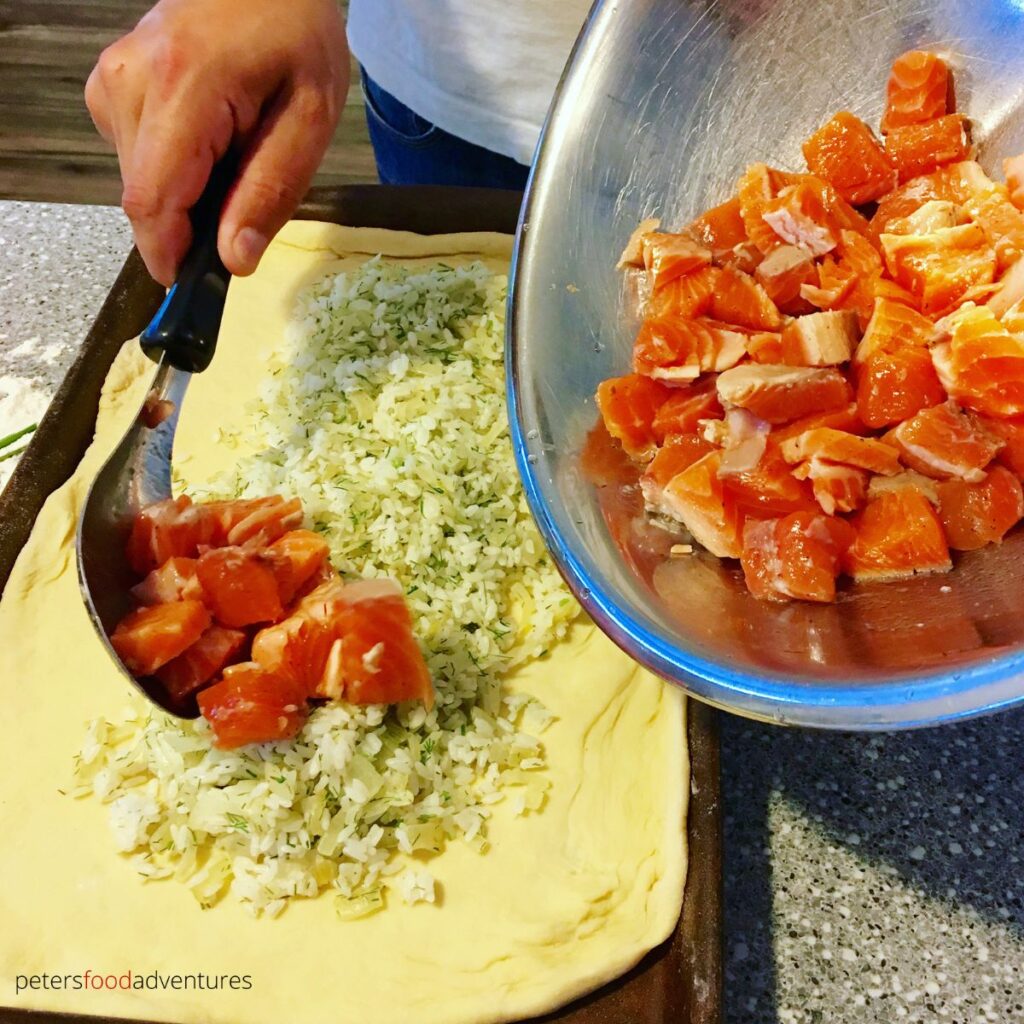
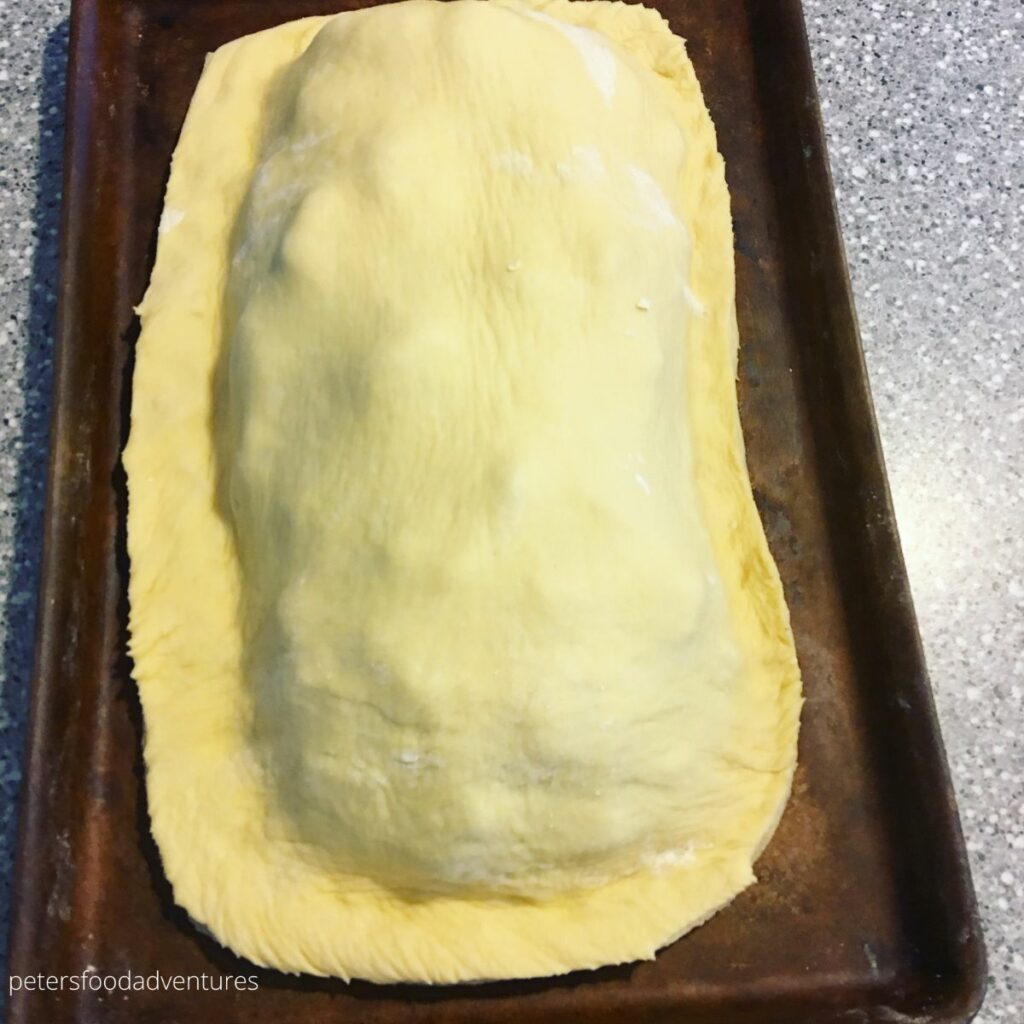
Assembling Kulebyaka
- Roll Dough - on a lightly floured surface, cut the dough in half and roll into a large rectangle, enough to cover your baking sheet. Carefully place inside your baking sheet.
- Add Rice - spread rice filling evenly across the dough, leaving a border edge. Top with salmon pieces spread evenly over the rice. Cut 2 tablespoons of butter into small pieces and place randomly across the salmon.
- Roll Dough Cover - roll second piece of dough and place over top of the salmon, it will resemble a loaf. Push the edges together to seal the dough pieces, and cut off any excess dough and set aside.
- Lattice Cover - roll out leftover dough to decorate Kulebyaka. Use a lattice roller to cut lattice crust. Alternatively, cut a row small slits across the dough. Cut another row of small slits, offset from the first, so they are alternating. Carefully lift the lattice dough and place on top of the Kulebyaka. Seal the edges of the dough. Cut off excess pieces.
- Proof - cover with a towel and allow to rise again for about 30 minutes. Preheat oven to 375°F (190°C).
- Egg Wash - whisk an egg yolk with 1 teaspoon of whipping cream. Carefully brush entire Kulebyaka. Using a small knife, make 2 incisions on top of the Kulebyaka to allow steam to escape. Alternatively use wooden skewer to prick 8 holes across pie.
- Bake - Place in oven and bake for 40 minutes. When the top is golden brown, cover with aluminum foil to prevent burning.
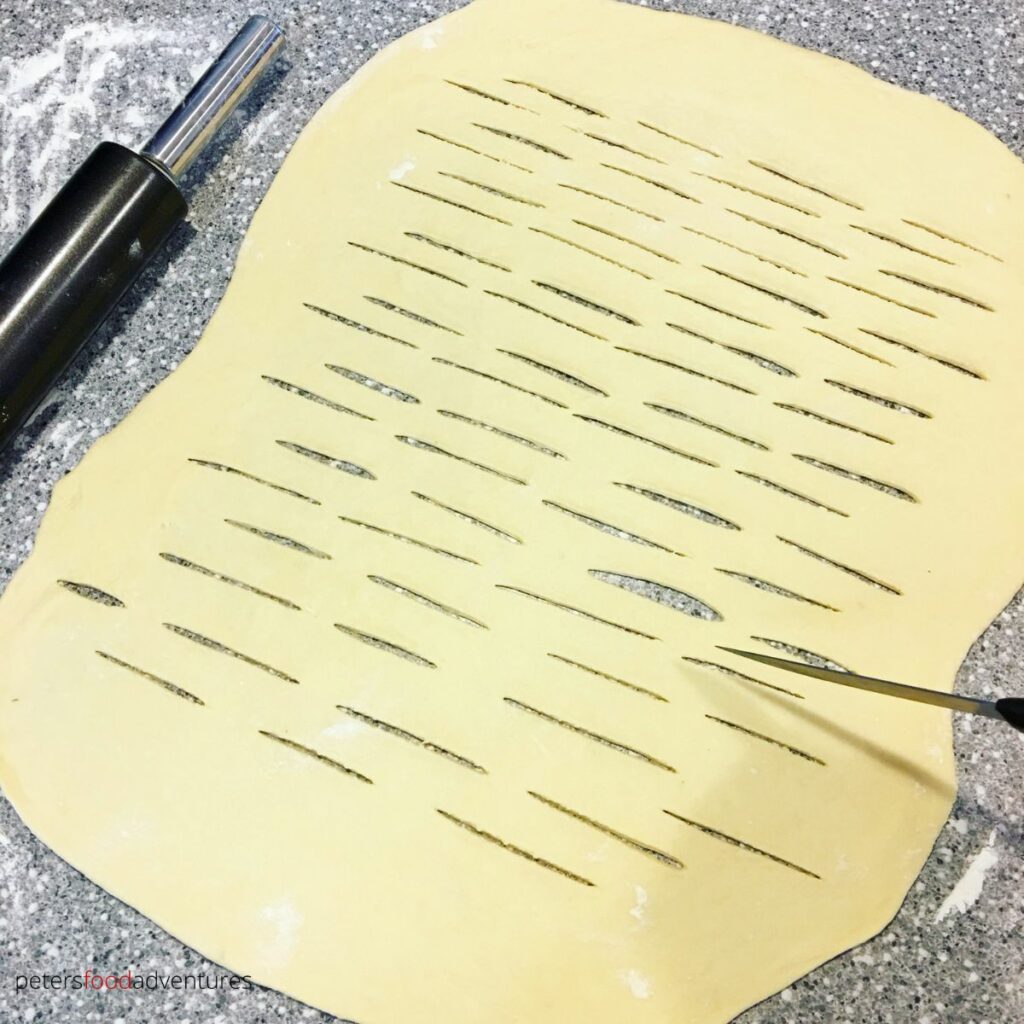
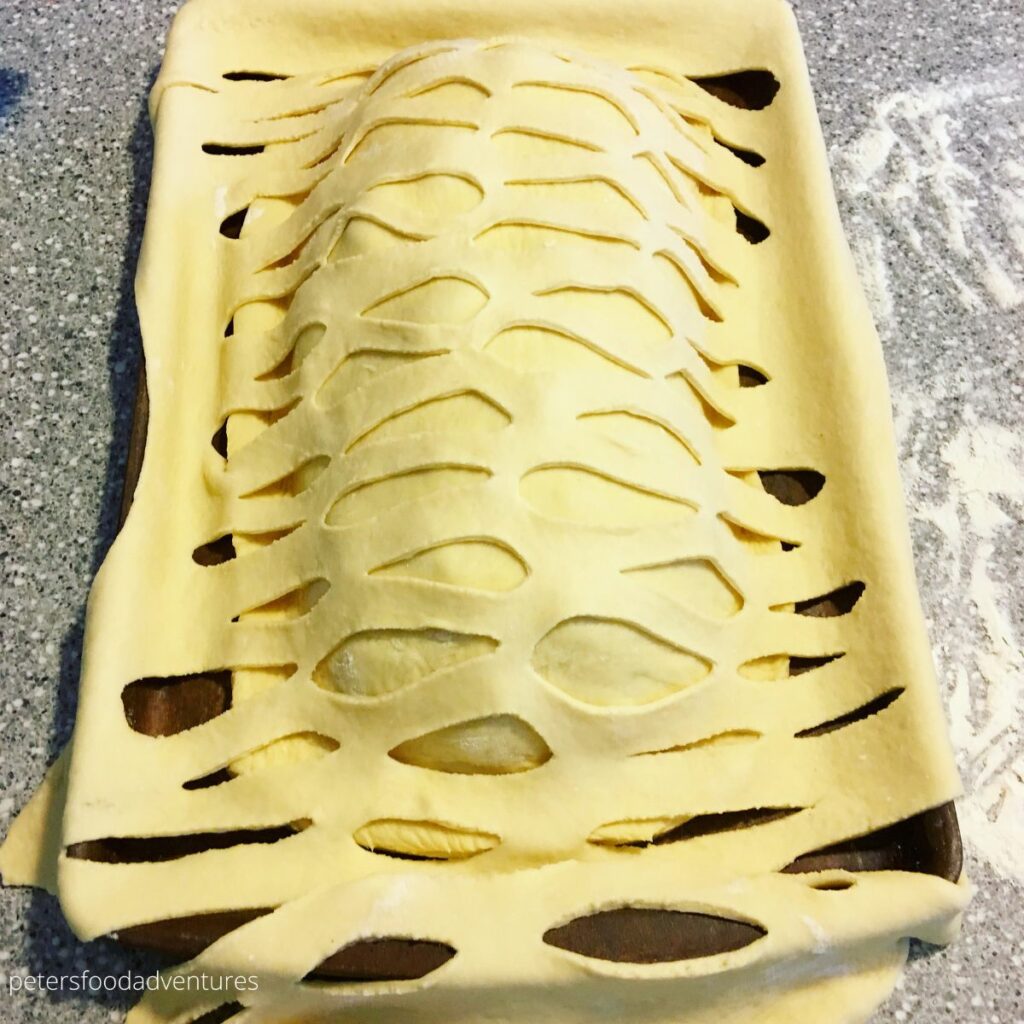
Coulibiac Variations
There are many ways to personalize Coulibiac, so easy and others more time consuming.
- Puff Pastry Coulibiac - this is the easy method as frozen puff pastry is available in the supermarket. While not traditional, it is a faster method. Pre-cook the salmon and flake before placing in pastry.
- Hard Boiled Eggs - add sliced eggs over the rice mixture
- Mushrooms - caramelize onions and add over the rice
- Blini - this adds more time as you need to prepare blini in advance. Layer blini over the dough, then add rice, eggs, mushrooms and salmon. Cover with blini before covering with dough covering.
- Other Fish - instead of salmon, add sturgeon, cod, or even trout
- Deep Dish Kulebyaka - babushka made a large, deep dish kulebyaka that would feed a crowd. Simple rustic food, she even included the fish head which gives great flavor.
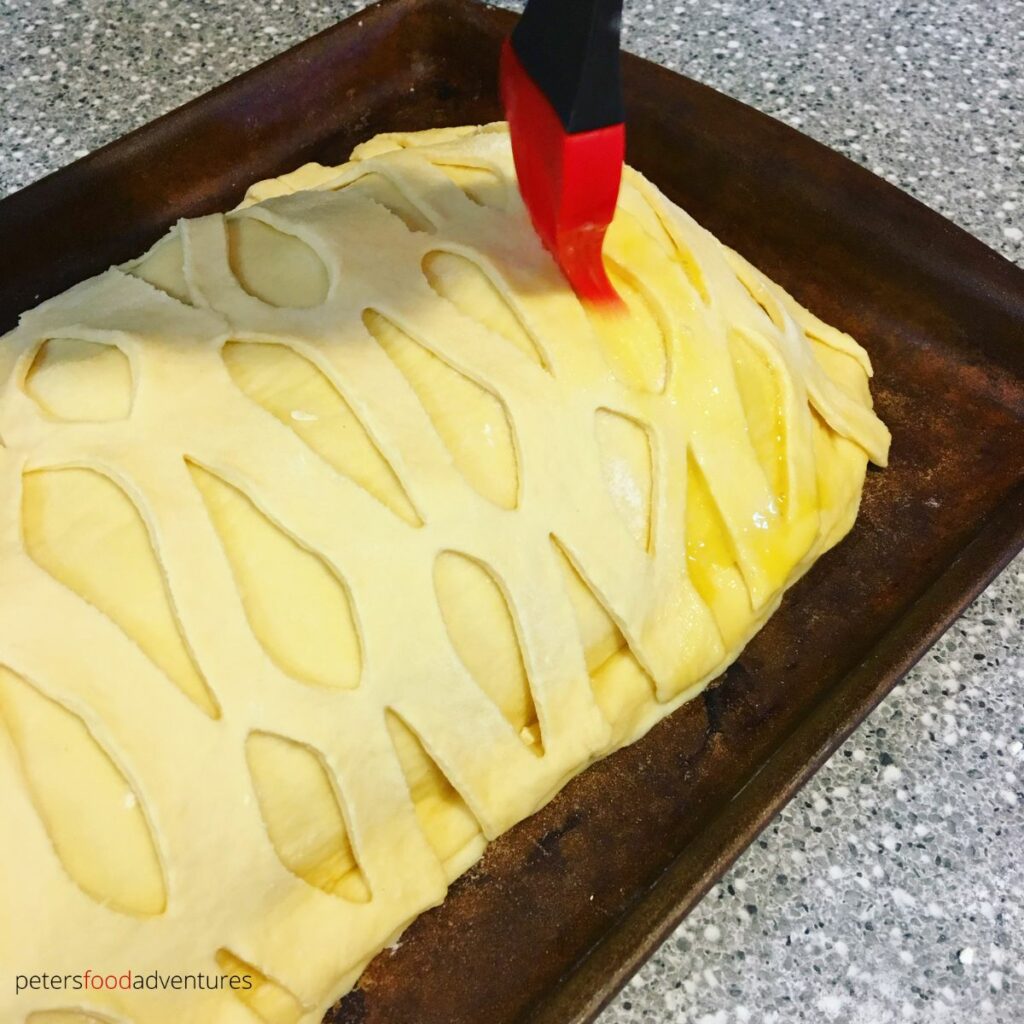
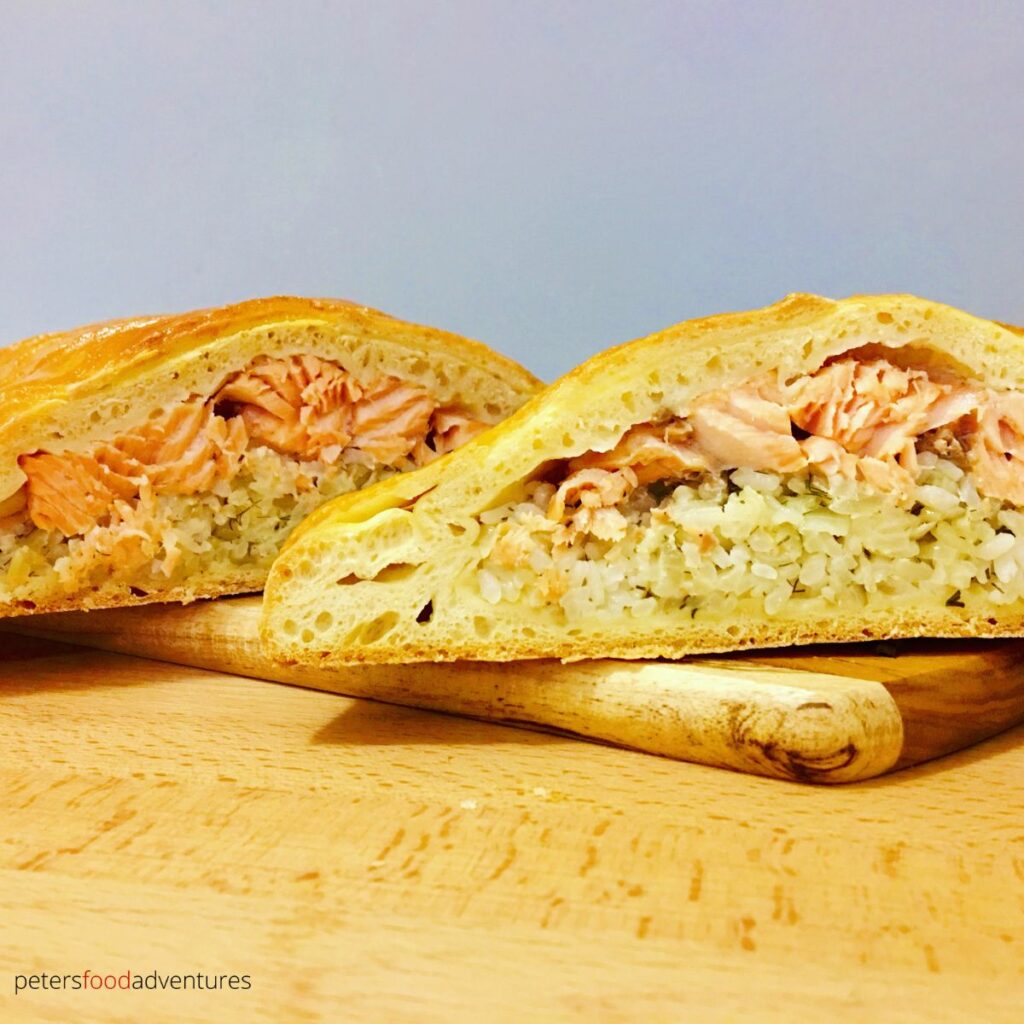
Bread Maker Dough Instructions
Here's an easy bread machine dough recipe if you don't want to make the dough from scratch. Some people prefer the convenience of a bread maker to do all the hard work to knead and proof the dough.
- 1 cup lukewarm milk
- ¼ cup lukewarm water
- 3 eggs
- 3 tablespoons melted butter
- 4½ cups of flour
- 2 teaspoons sugar
- 1 teaspoon salt
- 2 ¼ teaspoons bread maker yeast (or 7g packet of yeast)
- Bread Machine Instructions - place ingredients, in the order listed, into your bread machine and select the dough program. Should take about 90 minutes to complete the dough cycle.
Recipe Tips and FAQs
- Don't Cook the Salmon - no pre-cooking required. Chop into bite size pieces, and it bakes inside the dough.
- Salmon Fillets - it's easiest to buy Salmon Fillets from Costco, boneless and ready to use
- Season Well - ensure you add enough salt so flavors are balanced
- Decorate - manually weave strips of dough into lattice, alternatively use the leftover dough to make a pattern of leaves, branches or flowers on top of the pie
- Sauces for Coulibiac - traditionally served with Smetana Sour Cream, but feel free to experiment with Hollandaise, Russian Sour Cream Mayo or a Mustard Dill Sauce
How to Prevent Soggy Base
The traditional secret to this is use blini as your base, separating ingredients from the dough. Skip the mushrooms (if using) as they release more liquids into the pie. Don't skip the butter, that's the secret that melds the flavors together.
Storage
Place leftover Coulibiac into an airtight container and keep refrigerated. Best enjoyed within 3 days.
Reheating
Reheat in oven at 375°F (190°C) for 10-15 minutes. Ensure fully heated through and dough maintains texture.
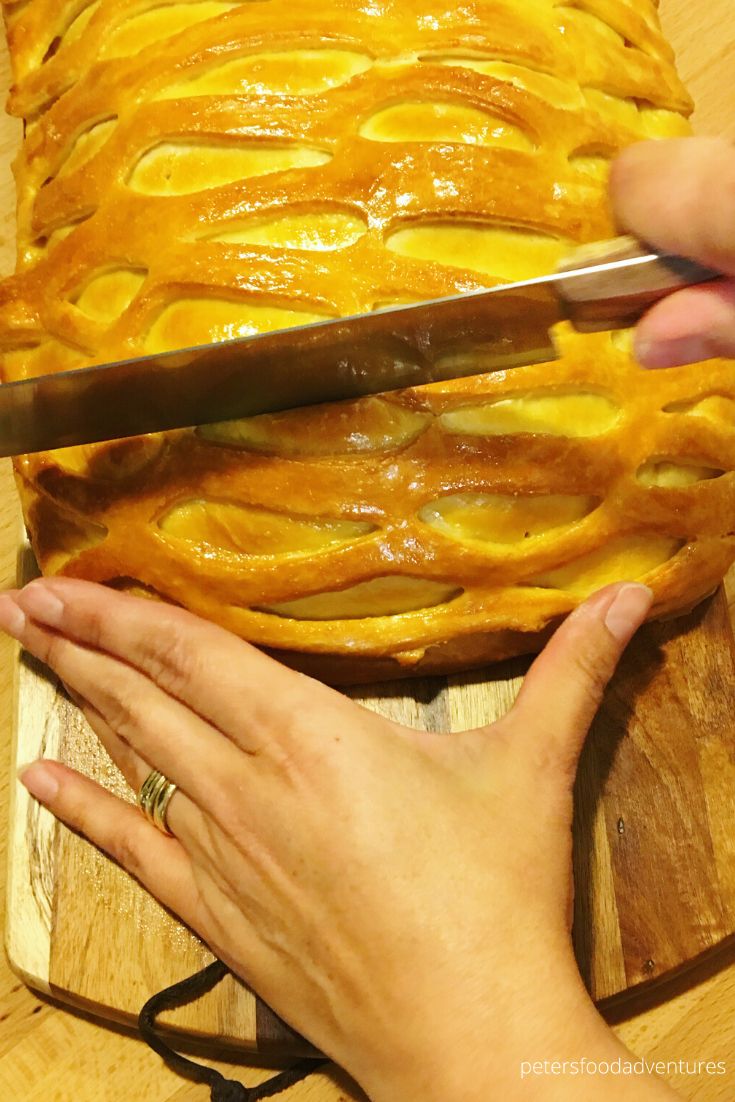
Russian Recipes You'll Love
- Rustic Fishermans Soup - Ukha
- Cabbage Piroshki
- Farmer's Style Stuffed Blini
- Chicken Stroganoff
- Lamb Shashlik
- Shchi Cabbage Soup
- Olivier Salad
- Mannaya Kasha
I'm pretty passionate about preserving the original rustic yeast dough way of making Kulebyaka. Maybe it's from the memories of eating my babushka's Kulebyaka. She was famous for her version of a deep dish fish pie. Many years ago, she stayed at our house and baked her pie with my wife. Looking back now, it's such a great memory to her food legacy, so glad I took a picture of her with my wife and the pie.
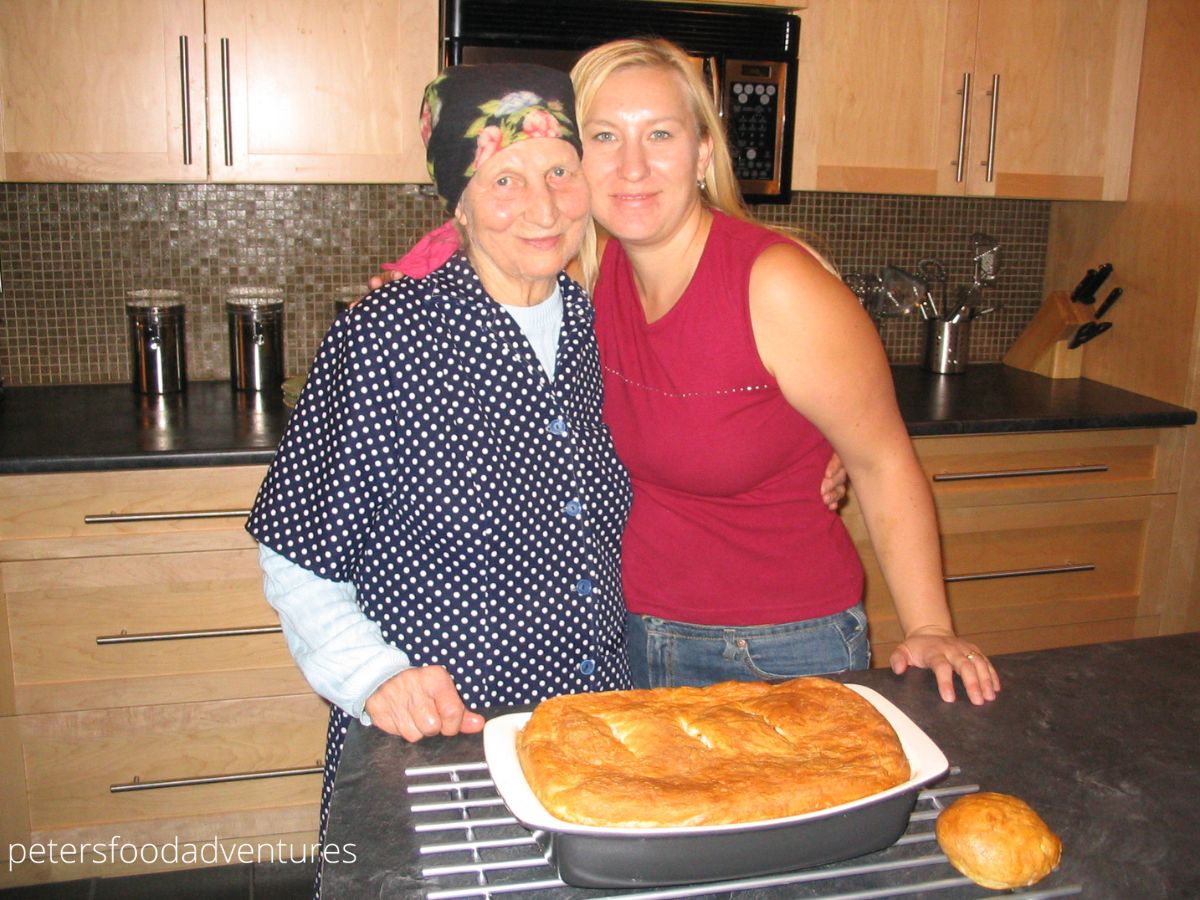
This recipe is worth the effort to make. What can you serve Salmon Coulbiac with? Perfect to serve alongside fish broth or your favorite soup, but I prefer to eat it as a meal, with garden salad and roasted asparagus. Bon Appetit! Приятного аппетита!
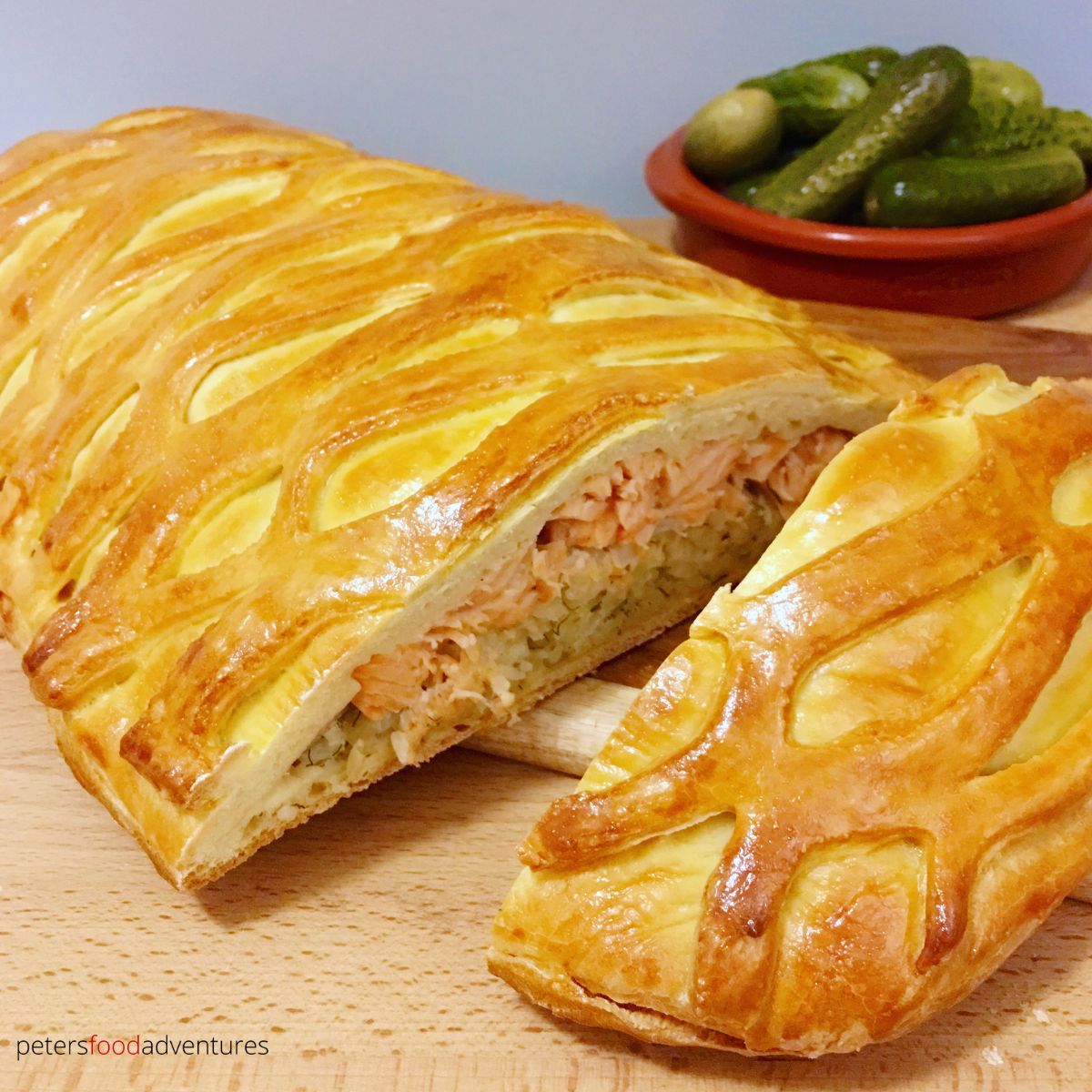
Ingredients
Kulebyaka Dough
- 1 ⅓ cups milk lukewarm
- 1 teaspoon salt
- 1 teaspoon sugar
- 1 tablespoon Instant Dry Yeast
- 4 cups flour
- 1 egg
- 3 tablespoons melted butter
- egg wash - egg yolk and whipping cream
Ingredients for Kulebyaka filling
- 2 pounds (1kg) Salmon boneless skinless
- 1 large onion diced
- 1 cup uncooked rice
- 1 bunch fresh dill finely chopped
- salt and pepper to taste
- 2 tablespoons butter
Instructions
Prepare Dough
- Proof Yeast - pour yeast, sugar, salt, and ½ of the lukewarm milk in a bowl. Whisk together and mix in 2 tablespoons of flour. Allow to sit for 15 minutes until it starts to bubble and foam, seeing the yeast is activated.
- Mix - in a large bowl, add remaining flour, milk with egg and melted butter. Pour in the activated yeast mixture and stir until it forms a shaggy ball.
- Knead - on a floured surface knead for about 5 minutes until smooth and elastic
- Rise - place in oiled bowl, cover with cling wrap and a kitchen towel. Place in warm spot. Takes about 1½ hours to rise. Punch down and gently knead before using.
Prepare Filling
- Prepare Rice - wash and cook the rice according to directions. Fluff with a fork and set aside and allow to cool.
- Caramelize Onions - in a frying pan, heat 3 tablespoons of butter on high, and fry the onions until they are opaque and just starting to brown (4-5 minutes). Add to the rice and mix together. Add the chopped dill, salt and pepper, mix and set aside.
- Combine - add caramelized onions to rice and mix together. Mix in chopped dill, salt and pepper, set aside.
- Cut Salmon - chop the salmon into chunky bite size pieces. Season with salt and pepper, set aside.
Making Kulebyaka
- Roll Dough - on a lightly floured surface, cut the dough in half and roll into a large rectangle, enough to cover your baking sheet. Carefully place inside your baking sheet.
- Add Rice - spread rice filling evenly across the dough, leaving a border edge. Top with salmon pieces spread evenly over the rice. Cut 2 tablespoons of butter into small pieces and place randomly across the salmon.
- Roll Dough Cover - roll second piece of dough and place over top of the salmon, it will resemble a loaf. Push the edges together to seal the dough pieces, and cut off any excess dough and set aside.
- Lattice Cover - roll out leftover dough to decorate Kulebyaka. Use a lattice roller to cut lattice crust. Alternatively, cut a row small slits across the dough. Cut another row of small slits, offset from the first, so they are alternating. Carefully lift the lattice dough and place on top of the Kulebyaka. Seal the edges of the dough. Cut off excess pieces.
- Proof - cover with a towel and allow to rise again for about 30 minutes. Preheat oven to 375°F (190°C).
- Egg Wash - whisk an egg yolk with 1 teaspoon of whipping cream. Carefully brush entire Kulebyaka. Using a small knife, make 2 incisions on top of the Kulebyaka to allow steam to escape. Alternatively use wooden skewer to prick 8 holes across pie.
- Bake - Place in oven and bake for 40 minutes. When the top is golden brown, cover with aluminum foil to prevent burning.
©PetersFoodAdventures.com *originally posted February 2016, updated February 2024
